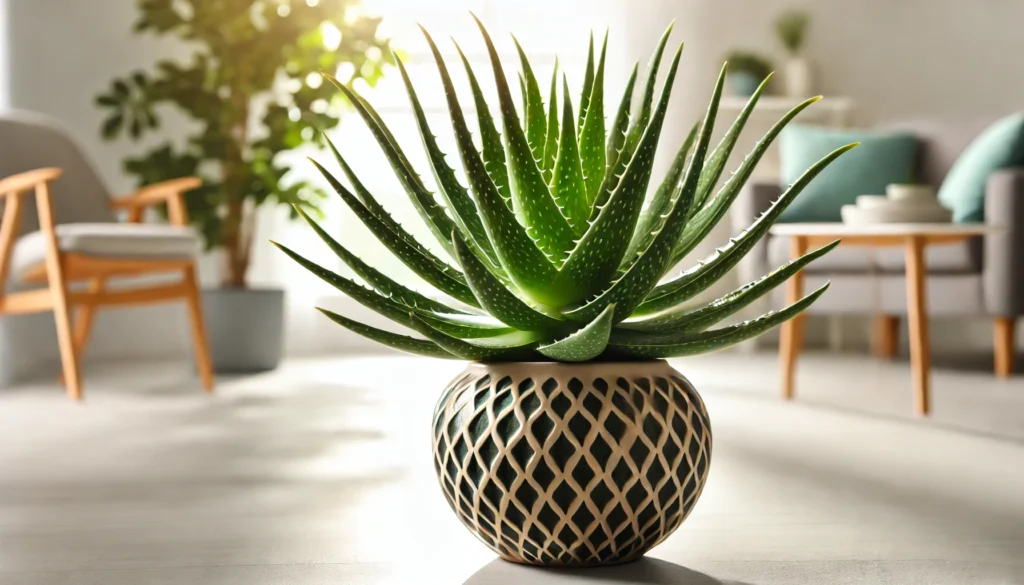
The Holly Fern, formally known as Cyrtomium falcatum, is a perennial plant celebrated for its glossy, holly-like fronds that add a touch of elegance to any shaded garden or indoor space. This fern typically grows up to 2 feet (60 cm) tall and wide, making it a perfect choice for ground cover or as a decorative houseplant.
History and Ideal Growing Conditions
The Holly Fern is native to eastern Asia, particularly Japan, Korea, and China, where it thrives in shaded, forested areas. It has been widely cultivated in gardens around the world for its attractive foliage and low maintenance needs. Holly Ferns are well-suited to USDA hardiness zones 6 to 10. They prefer cool, shaded environments with moist, well-drained soil. This fern is ideal for planting under trees, in shaded borders, or in containers where it can enjoy dappled sunlight.
Toxicity and Pets
The Holly Fern is non-toxic to pets, making it a safe option for homes with animals. You can confidently plant it in gardens or keep it indoors without worrying about your pets’ safety.
Safe Alternative Plants
If you’re looking for additional pet-friendly plants, consider the Boston Fern or the Maidenhair Fern. Both of these options provide similar lush, green foliage and are also safe for pets.
Best Practices for Caring for the Holly Fern
Caring for a Holly Fern is straightforward, but there are a few key practices to keep in mind to ensure it thrives.
Watering and Humidity
The Holly Fern enjoys consistently moist soil, but be careful not to overwater. Allow the top inch of soil to dry out slightly between waterings. In hot, dry climates or during the winter when indoor air can become dry, increase the humidity around the plant by misting the fronds regularly or placing the pot on a tray filled with water and pebbles.
Soil, Light, and Temperature
Holly Ferns prefer well-drained, rich soil with a slightly acidic to neutral pH of 6.0 to 7.0. They thrive in shaded to partially shaded areas, making them perfect for planting in areas that receive indirect sunlight or dappled shade. The ideal temperature range for Holly Ferns is between 60°F and 75°F (16°C to 24°C). They can tolerate cooler temperatures but should be protected from frost.
Fertilizing
Feed your Holly Fern with a balanced, water-soluble fertilizer diluted to half strength every 4 to 6 weeks during the growing season (spring and summer). Avoid over-fertilizing, as this can lead to leaf burn. Fertilize sparingly in the fall and winter when the plant’s growth slows.
Common Problems and Remedies
Holly Ferns are generally hardy, but they can encounter issues such as brown leaf tips, yellowing fronds, or pest infestations. Brown leaf tips often indicate low humidity or underwatering, so check the soil moisture and increase humidity if necessary. Yellowing fronds can be a sign of overwatering or poor drainage, so ensure the soil is well-drained and adjust your watering schedule accordingly. If you notice pests like scale or spider mites, treat the plant with insecticidal soap or neem oil.
Pruning for a Healthy and Attractive Holly Fern
Pruning helps maintain the Holly Fern’s shape and promotes healthy growth.
Tools Needed
Use sharp, clean scissors or pruning shears for trimming your fern. Sanitize your tools before and after each use to prevent the spread of disease.
Identify Areas to Trim
Prune your Holly Fern in early spring before new growth begins. Start by removing any dead, damaged, or yellowing fronds at the base of the plant. This will encourage fresh growth and help maintain the plant’s overall appearance.
Deadheading
Deadheading is not necessary for Holly Ferns, as they do not flower. However, removing any dead or unattractive fronds will keep the plant looking tidy and healthy.
Prune Leggy Growth
If your Holly Fern becomes leggy, trim back the fronds to a healthy bud or leaf joint. This will encourage denser, bushier growth.
Remove Damaged or Diseased Leaves
Regularly inspect your Holly Fern for signs of damage or disease. Remove any affected fronds immediately to prevent the issue from spreading.
Shape the Plant
Shape your Holly Fern by trimming back overgrown fronds to maintain its desired size and form. Be careful not to remove too much at once, as this can stress the plant.
Post-Pruning Care
After pruning, water the plant lightly and ensure it’s placed in an area with adequate humidity and indirect light. This will help the plant recover quickly and continue to thrive.
Propagation and Benefits
The Holly Fern can be propagated through division. In early spring, carefully dig up the plant and divide the root ball into smaller sections, each with several fronds attached. Replant the divisions in fresh soil and water them thoroughly. Propagating your Holly Fern allows you to expand your collection or share this beautiful plant with friends.
The Holly Fern is an excellent addition to any shaded garden or indoor space, providing lush greenery and a touch of elegance. Its low-maintenance nature and adaptability make it a favorite among gardeners and indoor plant enthusiasts alike.
Final Thoughts
Holly Ferns are hardy, attractive plants that add a touch of lush, green beauty to any space. With the right care, they will thrive for years, offering a delightful contrast to flowering plants or brightening up a shady corner of your garden. Whether you’re an experienced gardener or a novice, Holly Ferns are a wonderful choice for adding greenery to your home or garden.



